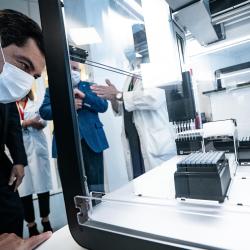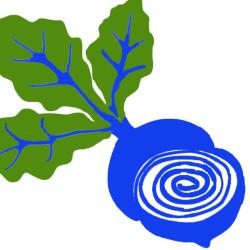
Submitted by S.A. Norwood on Tue, 09/08/2022 - 17:14
The winners have now been announced for this year's EngBio Postdoc Fund. Learn more about the four interdisciplinary projects that will be taking place over the next few months and the postdocs spearheading them.
The EngBio Postdoc Fund supports postdocs within the University of Cambridge Synthetic and Engineering Biology community to develop their own interdisciplinary, cross-departmental and cross-school projects. Projects could be submitted under five categories: piloting application-driven research projects, cross-sector relationship building, training, development of resources and tools, public engagement; and were judged on the following criteria: relevance, interdisciplinarity, value for money, feasibility and openness and responsibility. Having received a number of exciting proposals, the EngBio IRC judges have now selected this year's four winners.
Developing a workshop on mobile application development for responsible biological data collectionLead Postdoc: Dr. Angkana HuangTeam Members and Collaborators: Prof. Henrik Salje, TBCCross-sector relationship building, Training, Development of resources and toolsThis project will develop materials and a workshop on developing simple mobile phone applications for the use of biological research with contents, geared towards biologists who wish to leverage the abundance and accessibility of mobile phones in their research. The topics will cover (1) how to develop applications that work across multiple platforms (iOS, Android, Windows), (2) how to access sensors available on the phones (camera, mic, gyro), (3) how to design the user interface, and (4) how to store and transfer data securely and ethically. |
||||||
Small scale open-source automation workshopLead Postdoc: Dr. Facundo RomaniTeam Members and Collaborators: Prof. Jim Haseloff, Dr. Jenny MolloyCross-sector relationship building, TrainingRobotic liquid handlers are becoming more accessible for small/average molecular biology laboratories, enabling them to carry out routine experiments in higher throughput. Particularly, the open-access the Opentron OT-2 platform is one of the most common hardware for lab automation. However, protocols and training necessary for the operation of these equipment are not easily available for many departments in the University. This project aims to organize a training event for researchers and students interested in incorporating automation to their routine molecular biology experiments or groups with already some experience with automation. |
||||||
Biosynthesis of beta-blueLead Postdoc: Dr. Jiafu TanTeam Members and Collaborators: Dr. Samuel Brockington, Dr María Alejandra Guerrero Rubio, Dr. Xiang SunPiloting application-driven research projects, Development of resources and tools, Cross-sector relationship buildingThe project is proposed to biosynthesize indigoidine and betalamic acid simultaneously to produce a novel pigment, beta-indigodine(blue), through expressing four biosynthesis genes in Nicotiana benthamiana. The project is a proof of concept to biosynthesis of a novel pigment (most likely blue pigment). It would be a start point for pursuing new collaboration, funding support, and industry engagement. It will be the first test of whether the well-known natural betalain pigments can be more diverse by interacting with peptides rather than only amino acids. |
||||||
Using cDNA microarrays for fingerprint studies of a 2D and 3D in vitro model of the human gut – are we getting closer to in vivo systems?Lead Postdoc: Dr. Verena StoegerTeam Members and Collaborators: Prof. Róisín Owens, Dr. Jory Lietard, Douglas Van Niekerk, Kumar ThurimellaPiloting application-driven research projects, Development of resources and tools, Cross-sector relationship buildingThe gut microbiota plays a pivotal role in human health. So far, the influence of diet on host-microbiome interactions is incompletely understood due to available over-simplified in vitro or animal models. Thus, with the proposed project, we aim to identify mRNA fingerprints of a 2D and a recently developed 3D in vitro model of the human gut using a genome-wide gene expression microarray approach. This proposed project establishes a new collaboration between the University of Vienna and the University of Cambridge. |
||||||
We look forward to supporting these exciting projects as they progress and hope to share more news of their outcomes and achievements soon.
Image credits: Maximum Virtual Services, Wikimedia Commons (Developing a workshop on mobile application development for responsible biological data collection); Junta de Andalucía, Wikimedia Commons (Small scale open-source automation workshop); Gitane, Wikimedia Commons (Biosynthesis of beta-blue); BruceBlaus, Wikimedia Commons (Using cDNA microarrays for fingerprint studies of a 2D and 3D in vitro model of the human gut – are we getting closer to in vivo systems?)





